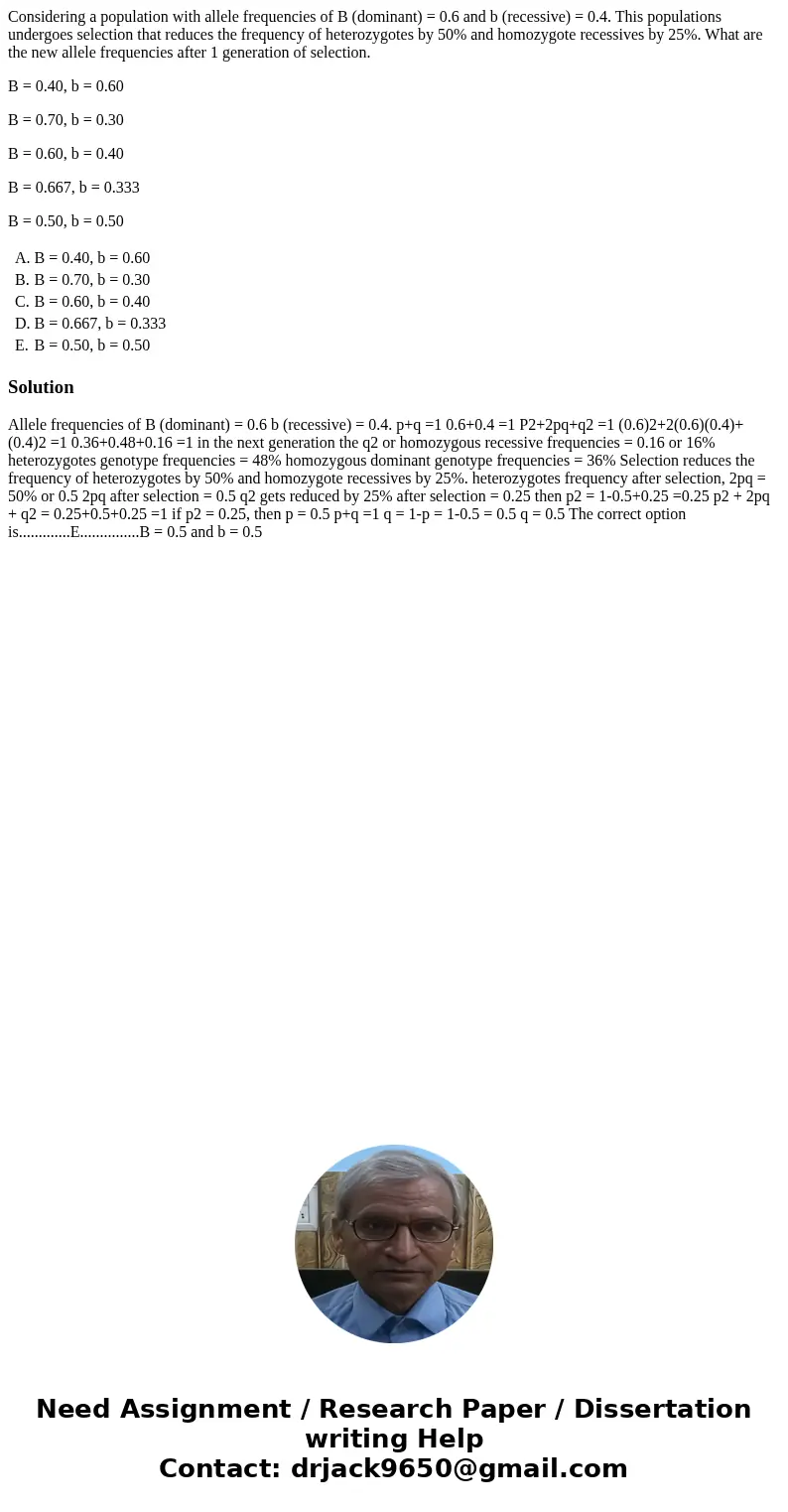Considering a population with allele frequencies of B domina
Considering a population with allele frequencies of B (dominant) = 0.6 and b (recessive) = 0.4. This populations undergoes selection that reduces the frequency of heterozygotes by 50% and homozygote recessives by 25%. What are the new allele frequencies after 1 generation of selection.
B = 0.40, b = 0.60
B = 0.70, b = 0.30
B = 0.60, b = 0.40
B = 0.667, b = 0.333
B = 0.50, b = 0.50
| A. | B = 0.40, b = 0.60 | |
| B. | B = 0.70, b = 0.30 | |
| C. | B = 0.60, b = 0.40 | |
| D. | B = 0.667, b = 0.333 | |
| E. | B = 0.50, b = 0.50 |
Solution
Allele frequencies of B (dominant) = 0.6 b (recessive) = 0.4. p+q =1 0.6+0.4 =1 P2+2pq+q2 =1 (0.6)2+2(0.6)(0.4)+(0.4)2 =1 0.36+0.48+0.16 =1 in the next generation the q2 or homozygous recessive frequencies = 0.16 or 16% heterozygotes genotype frequencies = 48% homozygous dominant genotype frequencies = 36% Selection reduces the frequency of heterozygotes by 50% and homozygote recessives by 25%. heterozygotes frequency after selection, 2pq = 50% or 0.5 2pq after selection = 0.5 q2 gets reduced by 25% after selection = 0.25 then p2 = 1-0.5+0.25 =0.25 p2 + 2pq + q2 = 0.25+0.5+0.25 =1 if p2 = 0.25, then p = 0.5 p+q =1 q = 1-p = 1-0.5 = 0.5 q = 0.5 The correct option is.............E...............B = 0.5 and b = 0.5
 Homework Sourse
Homework Sourse